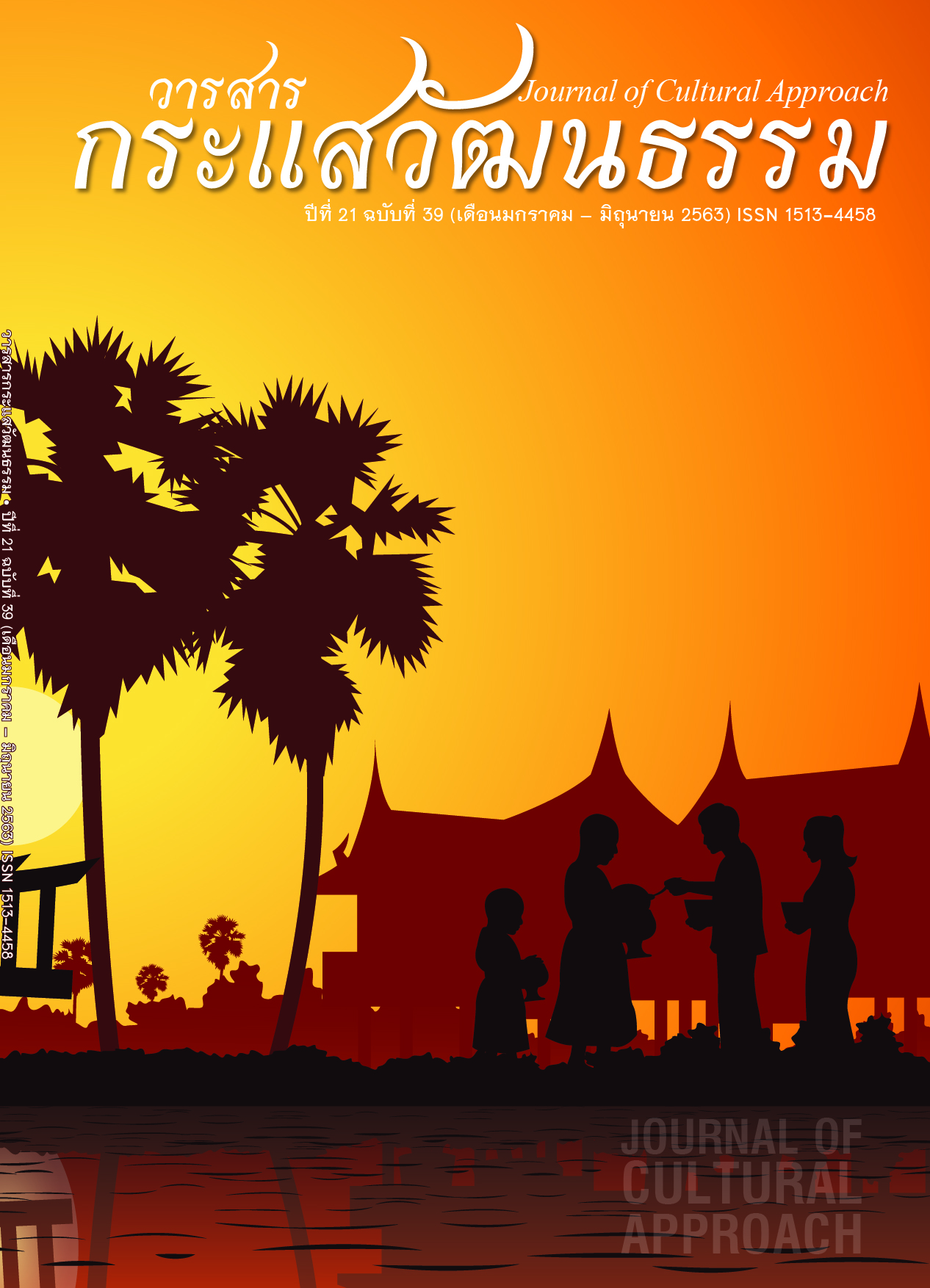Approaches for Sustainable Integrated Creative Southern Food Tourism Development in Surat Thani Province, Thailand
Main Article Content
Abstract
The purposes of this research were to 1) conduct the food tourism resources audit, 2) analyze the SWOR of southern creative tourism development, and 3) create the sustainable and integrated southern food tourism development concepts in Surat Thani, Thailand. Qualitative research was used in this research by using community education reports, tourism resource audit, and in-depth interviews.
The results of the research were as follows: 1) Surat Thani province has many tourist attractions and food activities, including the coastal area of the Gulf of Thailand, Khao Sok National Park, food festivals, oyster festivals in Kanchanadit and OTOP market. It also provides accommodation and information services for both Thai and foreign tourists such as brochures, maps and route signs.
2) The results of SWOT analysis are significant to determine the sustainable development of food tourism. Strength is that Surat Thani located in the middle of Southeast Asia which is the center of the world economy. Weakness is the food products have pesticide residues left. Also, the lack of cooperation between the agencies, lack of staffs and restaurants for food tourism. Opportunity is that the world population needs more food. Innovative technology allows opportunities to increase agricultural and food production efficiency. The threat is that competitors’ food exports have low production costs and labor costs.
3) To present a creative southern food tourism development in Surat Thani, the use of food strengths merged with the community’s opportunity to define a proactive strategy, such as branding in tourism products and services. Bringing the community’s weakness merged with food tourism development opportunities in order to set guidelines for determining a knowledge base on southern food culture.
Article Details
Proposed Creative Commons Copyright Notices
1. Proposed Policy for Journals That Offer Open Access
Authors who publish with this journal agree to the following terms:
- Authors retain copyright and grant the journal right of first publication with the work simultaneously licensed under a Creative Commons Attribution License that allows others to share the work with an acknowledgement of the work's authorship and initial publication in this journal.
- Authors are able to enter into separate, additional contractual arrangements for the non-exclusive distribution of the journal's published version of the work (e.g., post it to an institutional repository or publish it in a book), with an acknowledgement of its initial publication in this journal.
- Authors are permitted and encouraged to post their work online (e.g., in institutional repositories or on their website) prior to and during the submission process, as it can lead to productive exchanges, as well as earlier and greater citation of published work (See The Effect of Open Access).
Proposed Policy for Journals That Offer Delayed Open Access
Authors who publish with this journal agree to the following terms:
- Authors retain copyright and grant the journal right of first publication, with the work [SPECIFY PERIOD OF TIME] after publication simultaneously licensed under a Creative Commons Attribution License that allows others to share the work with an acknowledgement of the work's authorship and initial publication in this journal.
- Authors are able to enter into separate, additional contractual arrangements for the non-exclusive distribution of the journal's published version of the work (e.g., post it to an institutional repository or publish it in a book), with an acknowledgement of its initial publication in this journal.
- Authors are permitted and encouraged to post their work online (e.g., in institutional repositories or on their website) prior to and during the submission process, as it can lead to productive exchanges, as well as earlier and greater citation of published work (See The Effect of Open Access).
References
Apirath Bunnag. (2014). The Factors Affecting on the Southern Food Consumption of Thai Tourists. Journal of Cultural Approach, 15(28), 3–14.
Aumporn Lincharearn. (2011). Qualitative Data Analysis Techniques. Facultyof Education, Naresuan University.
Berninger, V. W., Abbott, R. D., Abbott, S. P., Graham, S., & Richards, T. (2002). Writing and Reading: Connections between Language by Hand and Language by Eye. Journal of Learning Disabilities, 35(1), 39–56.
Chang, R. C. Y., Kivela, J., & Mak, A. H. N. (2010). Food Preferences of Chinese Tourists. Annals of Tourism Research, 37(4), 989–1011.
Developing Learning Process Model. (2011). Community Education Knowledge and Local Wisdom. Faculty of Education, Pibulsongkram Rajabhat University.
Fields, D. L. (2002). Taking the Measure of Work: A Guide to Validate Scales for Organizational Research and Diagnosis. Retrieved from http://www.worldcat.org/oclc/37580676
Hjalager, A. M., Corigliano, M. A. (2000). Food for Tourists: Determinants of An Image. International Journal of Tourism Research, 2, 281–293.
Jureerat. (2013). Southern Food Information. Retrieved October 29, 2016, from http://oknation.nationtv.tv/blog/southernfoods/2013/03/23/entry–2
Kim, Y., Eves, A., & Scarles, C. (2009). Building A Model of Local Food Consumption on Trip and Holidays: A Grounded Theory Approach. International Journal of Hospitality Management, 3, 423–431.
Ministry of Tourism and Sports. (2016). Statistics and Tourism Economy. Retrieved February 27, 2018, from http://www.mots.go.th/more_news.php
Pakawadee Phugan & Soratworachum Inket. (2006). The Food Sets of Phitsanulok Indigenous. Journal of Cultural Approach, 17(32), 3–16.
Suphang Chantavanich. (2010). Qualitative Data Analysis. Bangkok: Chulalongkorn University Press.
Suphang Chantavanich. (2013). Qualitative Research Methods. Bangkok: Chulalongkorn University Press.
Surat Thani Provincial Development Strategy Group. (2018). Report Summary. Retrieved January 17, 2018, from http://123.242.172.6/yuttasat/
Surat Thani Provincial Statistical Office. (2013). Information. Retrieved October 29, 2016, from http://surat.nso.go.th
Surat Thani Travel Guide. (2016). Tourist Attractions. Retrieved October 29, 2016, from http://www.chillpainai.com/guide


